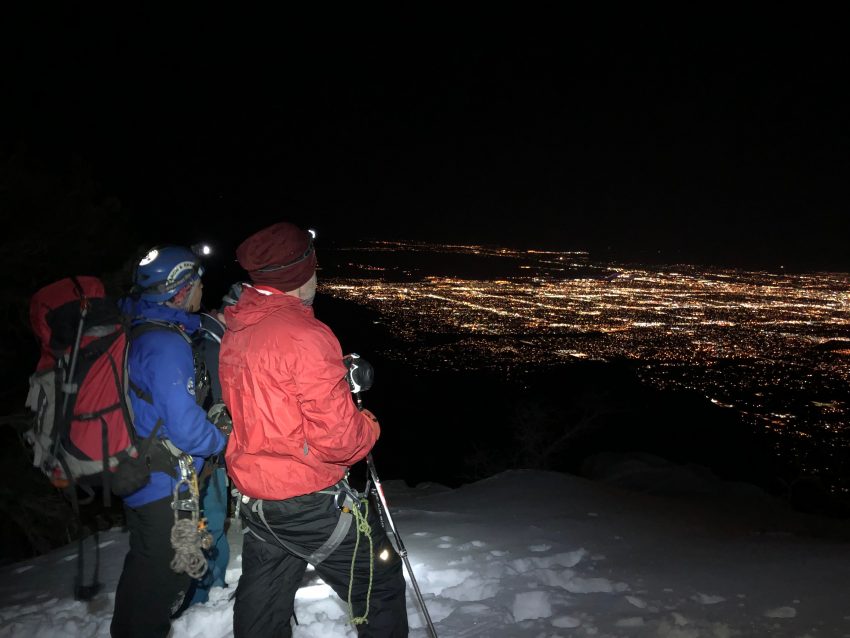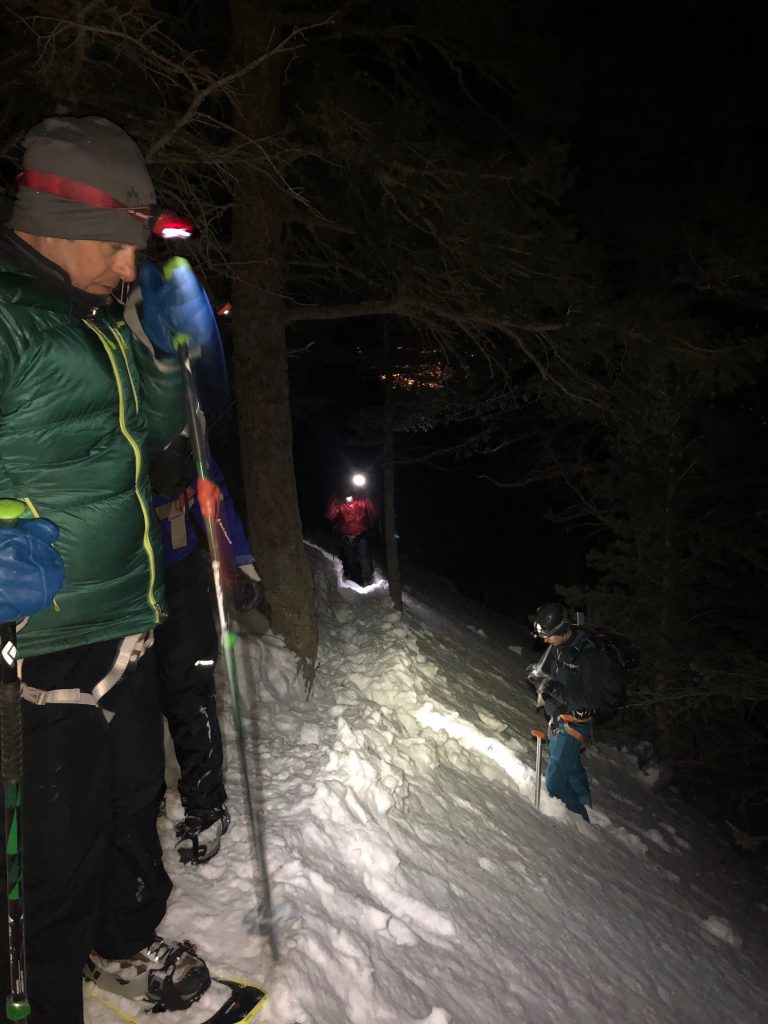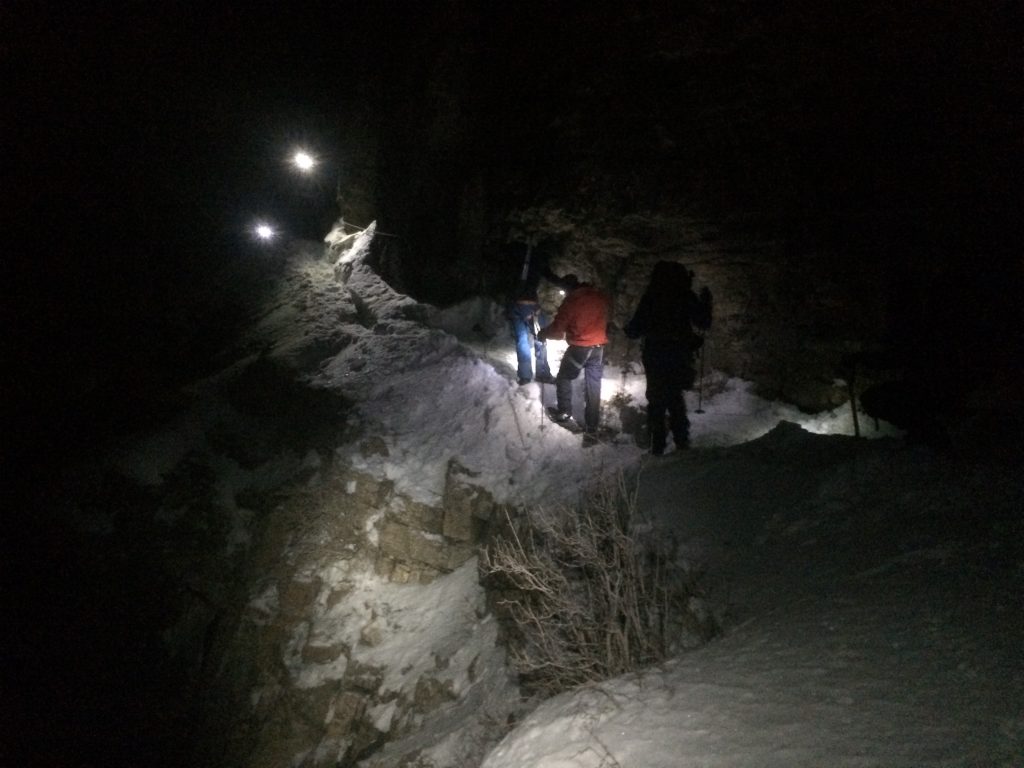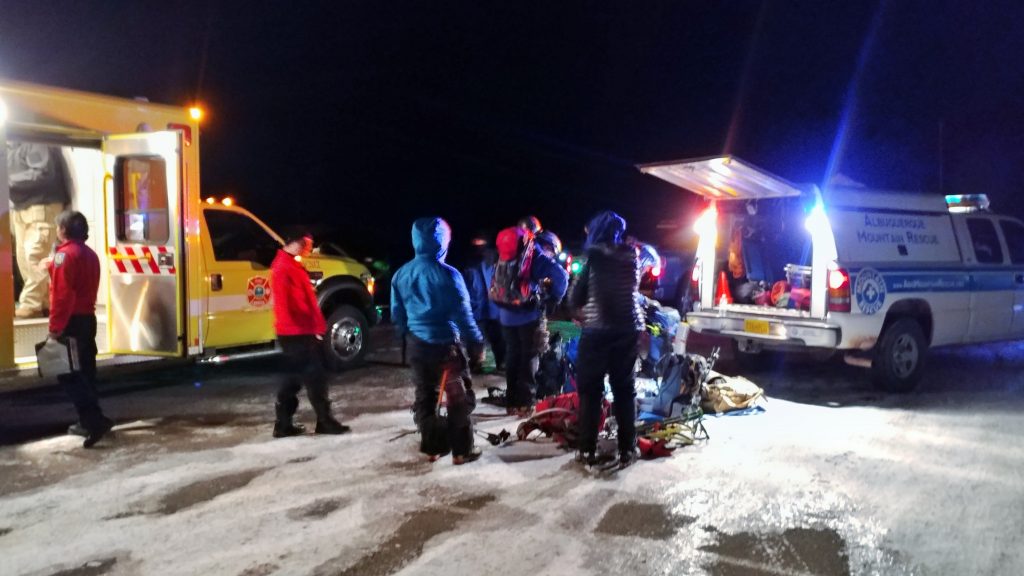Unlike many mountains of the Rocky Mountain terrain, the Sandias look playful and small. At 10,000ft at their highest, the warm glow of the sun against the reddish granite make them pale in comparison to their stark, grand sisters to the north. Gently snow capped–if at all in the winter–and centered in the desert, they are often mistaken for docile and easily surmountable.
As the weather warms in the city of Albuquerque below, occupants regularly equate the peak with similar weather. But, as trail users soon find out, the Sandias are ridden with vast canyons and deceitfully chilly winds. The temperatures soon drop and the elevation makes its presence known. Most of the trails in the Sandias easily accumulate over 1,000 ft of elevation again in as few as two miles and are listed as moderate to difficult, according to the USFS.
It happens like clockwork. Recreationalists venture out early to mid afternoon with little water and begin climbing. The city disappears behind valleys and canyon walls. Before they know it, the sun has already made its way towards the horizon with alarming speed.
It’s a strange phenomena where time is lost in the ebb and flow through the zigzag of the trail. The metropolis below and the peak above play a game of hide and seek creating a false illusion of closeness and distance. The top always appears closer than it is and inevitably the temperatures drop, the winds howl and the thin, comfy jacket does nothing to protect against the austere weather.
The trail suddenly becomes lost in the winter wonderland that wasn’t visible down below and ultimately, they concede. 911 gets called and we get dispatched.
By the time teams are nearing the trailhead, it’s typically been over two hours since the call was placed. With many trails having multiple points of access, the decision then becomes to approach from the top or the bottom of the trail, and with disoriented patients, it becomes even more complicated. Cell phone pings can assist in locating a person, but can be off by a generous amount.
This was the recent unfolding of two missions where hikers left unprepared and teams were faced with deciding whether to approach from the top of La Luz, a popular trail beginning at the foothills and finishing at the crest, or from the bottom. Or both, which is what happened on one oh so cold and stormy night. So as teams headed out, breaking trail toward the patients the grueling night carried on. Once the hikers were found, they were guided either up or down depending on ease and proximity. On one occasion, hikers clung to a secured hand line over the narrow, icy trail; on another, they hiked the four miles they’d already trekked up back to their vehicles.
After the members leave the field, so begins another chapter in the finalizing of a mission. Team members break down equipment and store it back in the rescue rig, which will eventually have to be returned to the cache, only then can that member get in their vehicle and return home. In cases where team members entered the field different from the area they exit, they are shuttled back to their cars and then return home.
This is an average mission for our team, and on average they can expect to be out in the field for a minimum of 6-8 hours–and that’s dependent on the patient’s condition. Ensuring patients are found is only half of the battle. Teams need to be prepared to provide food, water, warm, dry clothing and the proper gear in addition to carrying enough for themselves.
This comes at no cost to the patients but as a non-profit volunteer organization, the cost to maintain individual team member’s gear falls on the rescuer. The constant wear and tear on personal equipment can be fierce in the Sandias. Sharp rock, tenacious cacti and unruly brush easily win against even the strongest nylon. Not to mention the maintenance of extra clothing, food and any necessary equipment for the unsuspecting and unprepared patient(s).
Winter missions are unique in their layout as they often require a decent amount of logistical input, more so than their other seasonal counterparts. The trails range from icy, snowy to impassable. This requires initial evaluation at the trailhead and then fielding with the appropriate gear: crampons, snowshoes, harness, etc–ready to for any changes they might face down the trail.
The financial investment, while expensive at times, comes out of a passion for helping the outdoor community. Like many volunteer services, the intrinsic value of assisting others keeps members invested and going out into the field at odd hours of the night. In tandem, our team works to provide public outreach and information sessions to encourage recreationalists to leave the trailhead prepared.
Written By: Moriah Carty
PA Student at UNM
AMRC Operational Member
Badass Mountain Biker




Great article and well written. It allows people to understand the risks with venturing out unprepared as well as the sacrifices of the SAR teams.
We know how well this group works. They train constantly for every type of mission they may encounter. Congratulations to all the team members who are may be called out at any time, day or night, in any type of weather. Your volunteering for this work deserves thanks from the entire community of Albuquerque and the state of New Mexico. Thanks to ALL for your dedication and service!
Absolutely beautiful and eloquently written! It’s what we do-helping others while not becoming casualties ourselves, although that has happened. It’s part of venturing into nature.
The patient number one was my son. I am so very thankful for you all that rescued them. God is with you all in each rescue and with the ones waiting for you to save them. My sons story would have been very different without your team and we would have never knew what happened. God bless you for what you do and you will be in my prayers.
Thank you for such a fantastic blog. Where else could anyone get that kind of info written in such a perfect way? I have a presentation that I am presently working on, and I have been on the look out for such information